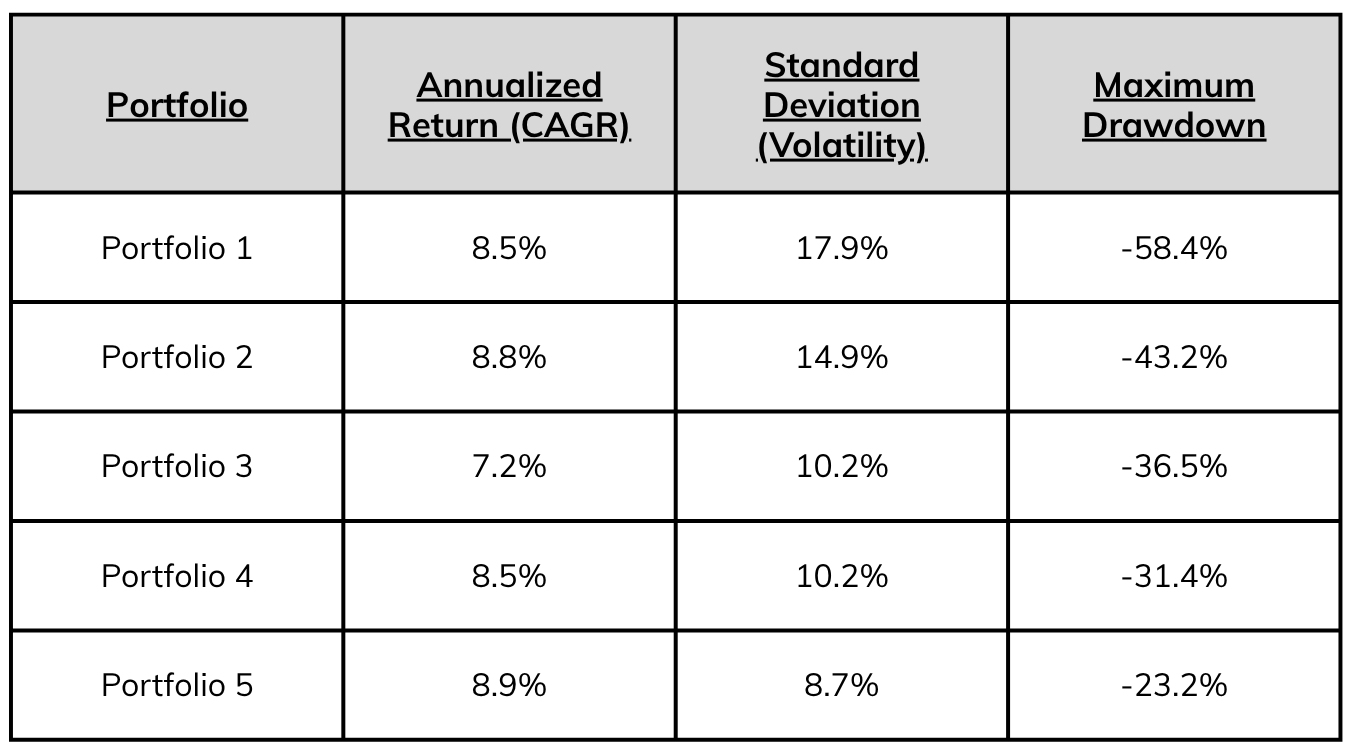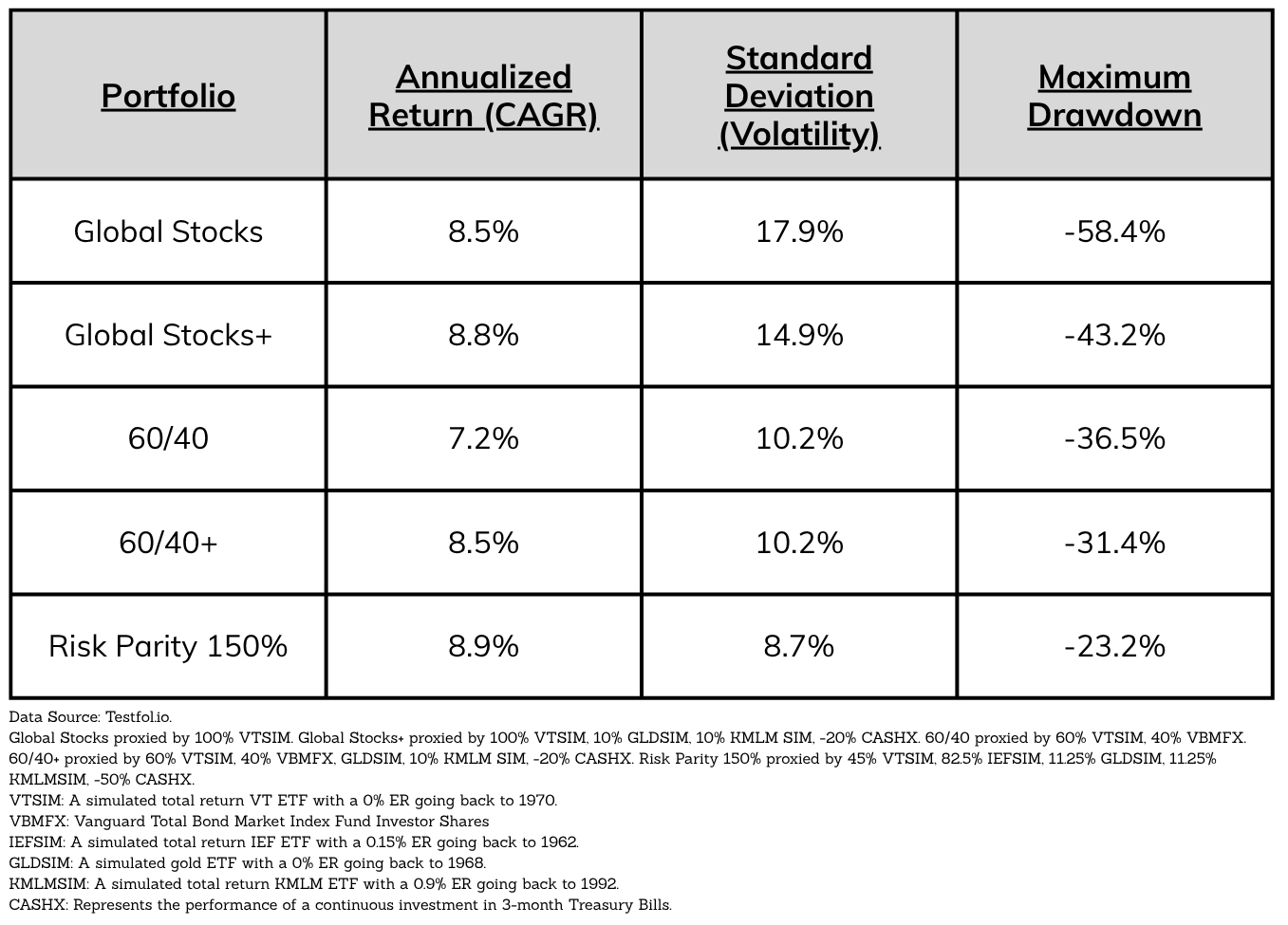Risk Parity + Capital Efficiency
Kardinal Financial uses a combination of Risk Parity and Capital Efficiency to maximize your expected return for the risk you're willing and able to take.
"Risk Parity" means allocating across diverse asset classes to balance exposure to major economic environments of growth, recession, inflation, and deflation.
"Capital Efficiency" means increasing your exposure to a diverse portfolio to increase expected returns, rather than concentrating into stocks.

Portfolios are constructed using exchange-traded funds (ETFs), with exposure to global stocks, bonds, gold, commodities, currencies, and rates.
Why?
- Stocks perform well in periods of economic growth
- Bonds perform well in periods of deflation and recessions
- Alternatives perform well in periods of inflation

Take a moment to consider which of the portfolios below you would prefer:

What are these mystery portfolios?

You may be surprised to learn your preferred portfolio is a risk parity-style portfolio. This is perfectly rational, as risk parity-style portfolios tend to offer superior return and risk profiles to traditional stock-only or stock-and-bond portfolios.
To achieve higher returns, investors have two choices: concentration or capital efficiency. Kardinal Financial's portfolios opt for capital efficiency, while traditional portfolios opt for concentration in stock-heavy portfolios.


